Business correspondence letter template
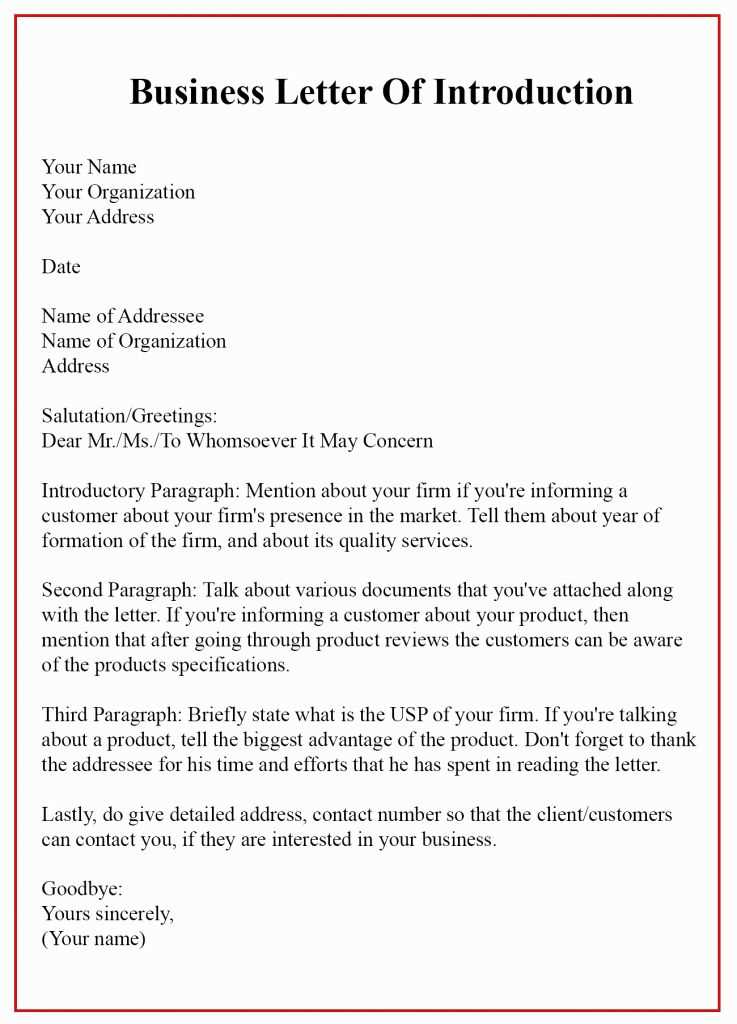
When drafting a business letter, clarity and structure are key. Begin with a polite and professional greeting, followed by a clear introduction of your purpose. This ensures the recipient understands the context right from the start.
Use a formal tone throughout the letter and keep sentences concise. Stick to the point without unnecessary elaboration to maintain the reader’s attention. Conclude by offering an actionable next step or expressing your willingness to discuss further details if needed.
Ensure that your contact information is easy to find and formatted correctly. Whether you’re requesting information or providing it, always sign off in a courteous manner. A business letter template with these elements guarantees your message is received and understood clearly.
Here’s the corrected text:
Ensure clarity in your correspondence. Always address the recipient directly and avoid overly formal language unless necessary. Use bullet points or numbered lists to present complex ideas in a simple format.
Keep the tone polite but direct. If you’re confirming details, do so clearly to avoid misunderstandings. Use specific dates, times, and actions to avoid ambiguity.
When referencing previous correspondence, include specific details to help the recipient recall the context. Avoid generic statements that may cause confusion or leave room for misinterpretation.
Double-check your email for typos, especially in professional settings. A single error can lead to miscommunication or give the wrong impression.
Here’s an example format for a simple business correspondence:
| Section | Example |
|---|---|
| Subject | Follow-up on Project Deadline |
| Greeting | Dear Mr. Smith, |
| Body | I’m following up on our last conversation regarding the project deadline. As discussed, the final report is due by February 15. Please let me know if you need further assistance or adjustments. |
| Closing | Best regards, John Doe |
Always include a clear call to action, such as requesting a response or confirming receipt. This helps keep the communication process efficient and organized.
- Business Correspondence Letter Template
A well-structured business letter can set the tone for a professional relationship. Here’s a straightforward template to guide you when writing your letter:
1. Heading
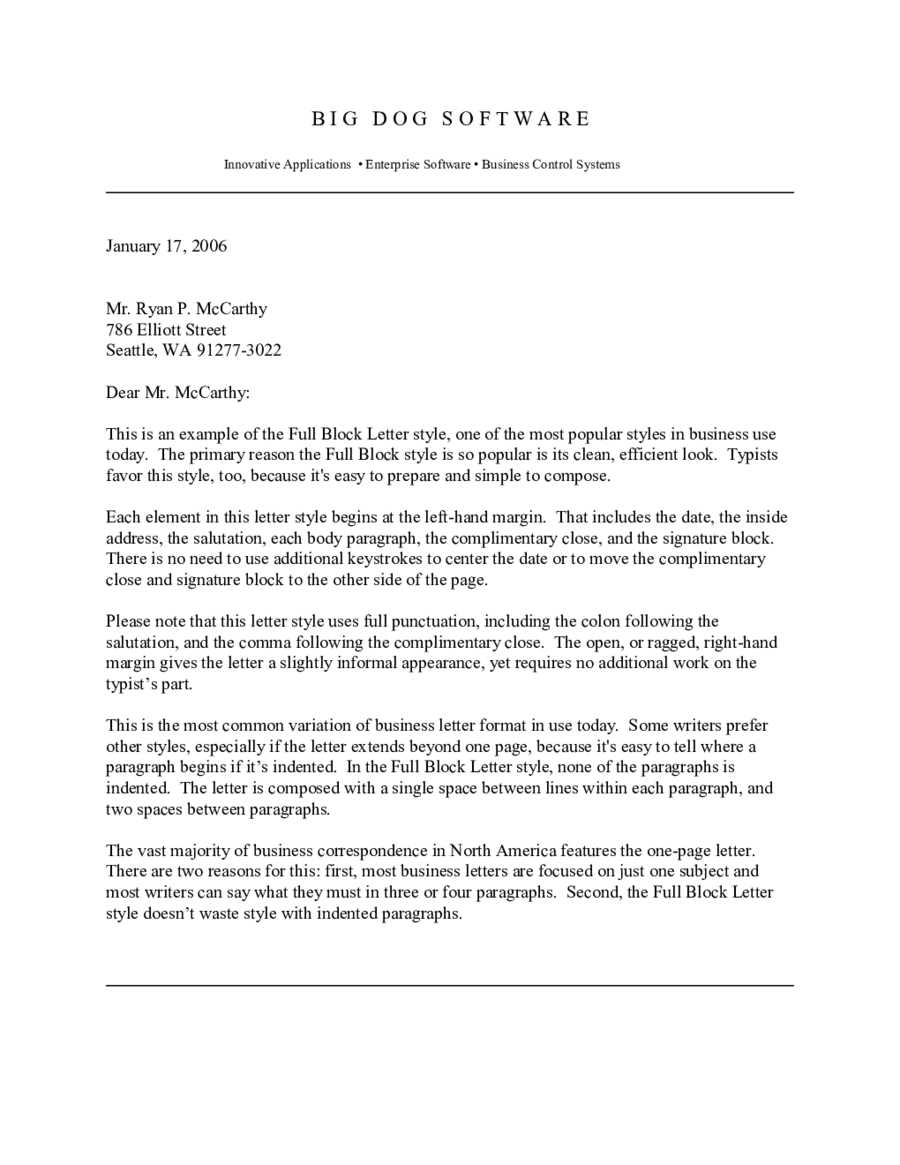
- Your name and address
- Date
- Recipient’s name, title, and address
2. Salutation
Start with a polite greeting. If you know the recipient’s name, use “Dear [Name],” followed by a comma. If you’re addressing a group or someone whose name is unknown, use “To Whom It May Concern.”
3. Opening Paragraph
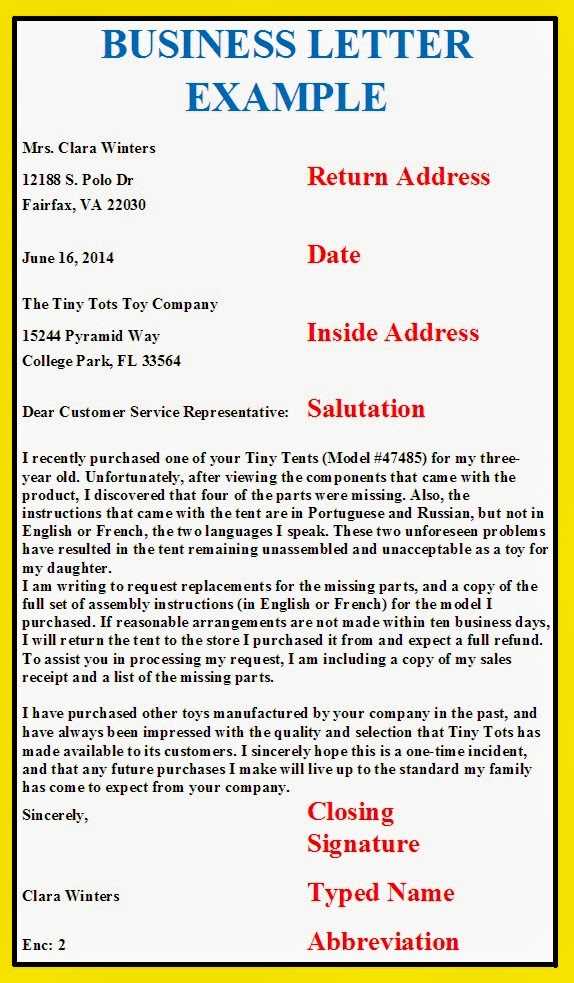
Clearly state the purpose of your letter in the opening paragraph. Be concise and to the point, outlining the main reason for writing. Avoid over-explaining details in this section.
4. Body
- Provide necessary details, keeping your language professional and clear.
- Include any supporting facts, data, or references that reinforce your message.
- Maintain a tone that’s respectful and formal.
5. Closing Paragraph
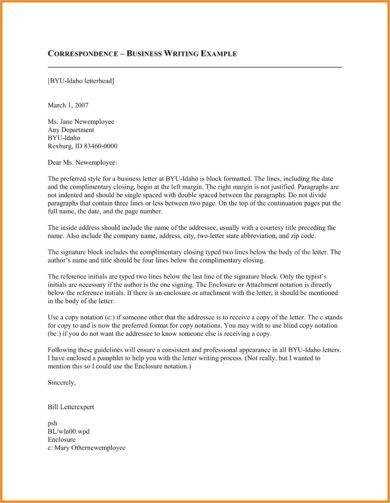
Summarize your request or message. If you are expecting a reply, make this clear. Politely invite the recipient to get in touch if necessary.
6. Complimentary Close
- End with “Sincerely,” “Best regards,” or another suitable closing, followed by a comma.
- Leave space for your signature and include your typed name below.
By following this format, your business correspondence will be clear, professional, and well-received.
Begin with your contact information at the top of the letter. Include your full name, title, company name, address, and contact details. This establishes your identity and makes it easy for the recipient to reach you.
Next, add the date of writing. Use a formal date format, such as “January 30, 2025,” to maintain professionalism.
After that, include the recipient’s contact details. This should cover their full name, title, company, and address. If you’re unsure of the recipient’s name or title, do some research to ensure accuracy.
Proceed with a formal salutation, addressing the recipient by their full name or title. If you’re unsure of gender or title, opt for a neutral “Dear [First Name Last Name].” Avoid overly casual greetings like “Hi” or “Hey.”
Once the salutation is in place, you’re ready to move into the body of your letter. These first few lines should establish a professional and clear tone, without unnecessary filler or vague phrases.
Keep your business letter clear and concise by following a structured format. A well-organized letter ensures that your message is both professional and easy to understand. The key to a professional tone lies in the use of proper formatting elements that reflect clarity and respect.
1. Choose a Standard Font and Size
Opt for a simple, widely accepted font such as Arial, Calibri, or Times New Roman, and set the font size to 11 or 12 points. This ensures readability while maintaining a formal appearance.
2. Use a Professional Salutation
Start your letter with a respectful salutation, such as “Dear [Recipient’s Name],” followed by a comma. Avoid using informal greetings, and always ensure you spell the recipient’s name correctly. If you are unsure of the recipient’s gender or title, use their full name to maintain neutrality.
3. Maintain a Clear Structure
Divide your letter into clear paragraphs, each serving a distinct purpose. Start with an introduction, followed by the main content, and end with a conclusion. Leave a space between each paragraph for easy reading. Avoid excessive spacing or crowding of text.
4. Close with a Polite Sign-Off
End the letter with a courteous closing phrase, such as “Sincerely” or “Best regards,” followed by your name and position, if applicable. This leaves the reader with a professional impression of your communication style.
Start with the recipient’s title and last name for formal communication. If you’re unsure about their gender, use their full name instead of assuming a title. For example, use “Dear Taylor Morgan” instead of “Dear Mr. Morgan” or “Dear Ms. Morgan.” This shows respect and avoids any potential mistakes.
If you have an ongoing relationship with the recipient, you can opt for a more casual greeting. For instance, “Hello [First Name]” works well when addressing someone you’ve worked with closely or have communicated with before. It’s friendly but still professional.
Avoid using generic greetings like “To Whom It May Concern” unless absolutely necessary. It’s better to find out the recipient’s name. If you can’t, “Dear Sir/Madam” can be a more respectful alternative than a generic salutation.
In case of a group or team, “Dear Team” or “Hello Everyone” keeps things professional but inclusive. For specific departments, like “Dear Marketing Team,” helps direct the message more efficiently.
Always tailor your salutation to match the tone and nature of your message. A more formal letter requires a more respectful salutation, while a casual note can be greeted more simply and warmly. Choose wisely based on context.
Begin the body with a clear and direct statement of purpose. Identify the main topic or action needed, whether it’s a request, response, or piece of information. Avoid unnecessary wording; aim for conciseness without losing clarity.
Organizing Paragraphs for Clarity
Each paragraph should focus on one specific point. This ensures the reader can follow your argument or reasoning easily. When making a request, for example, clearly outline the specifics: who, what, where, when, and how.
Using Bullet Points or Lists for Details
When presenting a list of items or key information, consider using bullet points or numbered lists for easy readability. This will help the recipient quickly digest the information without feeling overwhelmed.
| Type of Information | Format to Use |
|---|---|
| Requests | Clear, step-by-step approach |
| Details | Bullet points or tables |
| Summary or Conclusion | Short paragraph restating key points |
Conclude the body with any required follow-up or next steps. Use this space to clarify any actions that are expected and when they should be completed. Be specific about deadlines, if applicable, to prevent confusion.
To conclude a business letter, choose a closing phrase that matches the tone and formality of your communication. A strong sign-off not only leaves a lasting impression but also ensures your letter maintains a professional demeanor.
- Formal Closings: For highly formal business letters, use expressions like “Sincerely,” “Yours faithfully,” or “Best regards.” These are ideal when addressing people you don’t know personally or when you’re communicating in a more serious context.
- Informal Closings: In more casual or friendly business settings, opt for “Kind regards,” “Best wishes,” or “Warm regards.” These phrases are appropriate when you have an established relationship with the recipient or when the tone of the letter is more conversational.
- Signature: After your sign-off, leave space for your signature, followed by your name and job title. This shows that the letter is official and provides contact information if needed.
- Post-Signature Information: You may include additional details after your name, such as your contact number, email address, or company website. This is helpful for follow-up or providing further information without cluttering the body of the letter.
Each sign-off has its own context, so consider the relationship and formality level before making your choice. Ending with a clear and respectful sign-off leaves a positive impression and reinforces your professionalism.
Common Mistakes to Avoid in Correspondence
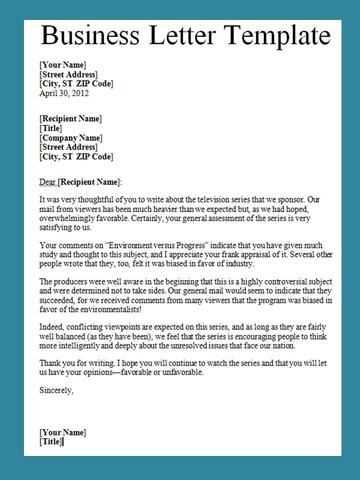
Clarity is key–avoid using ambiguous or overly complex language. Keep your sentences direct and concise. If the message isn’t clear, the recipient may misinterpret it, leading to confusion or delays.
1. Misusing or Omitting Greetings
Using the wrong salutation or neglecting to greet the recipient can make your communication feel impersonal. Start with an appropriate greeting like “Dear [Name],” and ensure that it matches the tone of your relationship with the recipient.
2. Overuse of Jargon or Technical Terms
Using jargon or overly technical language can alienate or confuse your audience. Tailor your writing to suit the recipient’s knowledge level, keeping terms simple and understandable unless you’re certain the other party is familiar with the terms.
3. Incorrect or Missing Contact Information
Double-check all contact details, such as phone numbers, email addresses, and mailing addresses. Sending correspondence with incorrect information wastes time and causes delays in communication.
4. Forgetting to Proofread
Spelling and grammatical mistakes can damage your credibility. Before sending any correspondence, take a moment to proofread. A clean, error-free letter shows professionalism and respect for the recipient.
5. Sending Overly Long Messages
A lengthy letter can lose the reader’s attention and dilute your main message. Keep it concise–if more detail is needed, consider attaching supporting documents or providing a summary instead of overloading the recipient with information.
6. Ignoring Response Time
Timely responses show respect for the other person’s time. If you can’t reply immediately, acknowledge receipt of the message and inform the recipient when you plan to provide a full response.
7. Using a Casual Tone in Formal Settings
Always match the tone of your letter to the situation. Avoid using overly casual language or emojis when communicating in formal contexts. Maintain professionalism, especially in initial contacts or business-related matters.
Keep your business correspondence concise and direct. Avoid unnecessary words and stick to the purpose of the message. Use clear and professional language while ensuring your tone matches the nature of the communication. Start with a straightforward subject line that reflects the content accurately, and include a polite greeting to set a respectful tone.
Structure your letter with clarity: Begin with a brief introduction stating the purpose of the letter. Follow with the main body, which should present the key points in a logical order. Use bullet points or numbered lists to highlight important information. Always end with a clear call to action or conclusion, making it easy for the recipient to understand the next steps.
Be polite but avoid over-formalities: Phrases like “I hope this message finds you well” can seem insincere. Stick to more functional expressions like “Thank you for your attention to this matter” or “I look forward to your response.” These convey respect without sounding forced.
Use proper sign-offs: Close your letter with an appropriate sign-off such as “Best regards” or “Sincerely,” followed by your name and contact information. This adds a professional touch while making it easy for the recipient to reach out if needed.